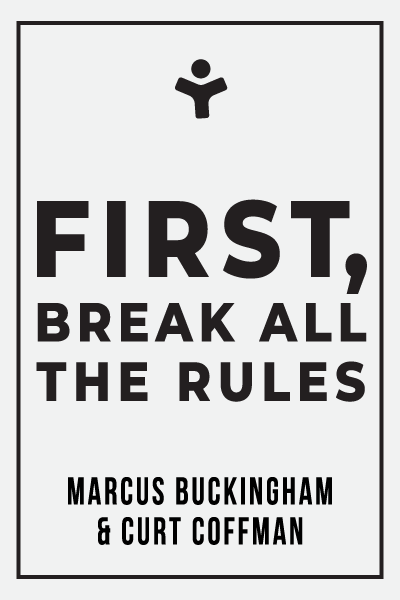
First, Break All the Rules: What the World's Greatest Managers Do Differently
by Marcus Buckingham & Curt CoffmanFirst, Break All the Rules presents groundbreaking insights into the management practices of the world's greatest managers. The author draws on two extensive research studies carried out by the Gallup Organization over the last 25 years to provide readers with revolutionary ideas that will take their managerial skills to the next level. By reading this book, you will gain an understanding of the needs of the most talented employees and how to attract, retain, and develop them. Plus, you'll also get to tailor your own managerial style based on the effective strategies shared by successful managers around the world.
Maintaining a Skilled Workforce
Securing and maintaining a skilled workforce is important to a company's success. Investors have come to understand that the value of a company is primarily determined by the abilities of its employees. When a talented employee decides to leave, they take with them a wealth of knowledge and value that's hard to replace.
Therefore, companies must focus on retaining talented employees by creating an environment that values and nurtures their skills and contributions. This may include providing benefits such as flexible working hours, opportunities for professional growth, and supportive work culture.
Actions to take
Executing the Four Key Management Activities
Great managers understand that everyone on their team is different and has their own motivators. They know that what works for one person might not work for another. That's why they focus on helping each team member become the best version of themselves by tailoring their approach to their individual needs.
To be successful in their role, managers need to execute four core activities: selecting the right person for the job, setting clear expectations, motivating team members, and developing their skills and abilities.
By executing these four core activities effectively, managers can create a positive and productive work environment where team members feel valued, motivated, and supported. In turn, this leads to improved job satisfaction, better work outcomes, and higher levels of employee engagement!
Actions to take
Empowering Employees
Managing employees, especially those working from a distance or remotely, can be challenging for managers since individuals tend to react differently to instructions. This can result in misunderstandings and mistakes that could impact productivity and morale.
Fortunately, there is one effective way to solve this—that is, by setting clear goals and objectives for each employee and letting them find their own path to achieving those goals. This approach allows employees to use their unique skills and strengths to determine the most efficient and effective way to reach the desired outcome.
When clear goals are set, employees tend to take ownership of their work and become more motivated to achieve the desired results. It creates an environment where individuals feel empowered to take responsibility for their work and take pride in their accomplishments.
Actions to take
Focusing on Employees' Strengths
Great managers know that the key to unlocking an employee's potential is by focusing on their strengths. Rather than trying to fix their weaknesses, they identify what they're good at and help them become even better in those areas.
To accomplish this, managers need to have a sharp eye for spotting their employees' strengths and be willing to provide the necessary support and resources to help employees develop their skills and expertise.
Actions to take
Crafting the Ideal Pay Plan
To redirect an employee’s focus toward becoming world-class, managers need to provide a clear path for growth and development.
The ideal pay plan for encouraging employee development would be one that directly compensates an employee based on the amount of expertise and skills they possess in their current role. This type of pay plan is known as broadbanding, a system where pay is defined in broad bands or ranges for each role. These bands allow for greater flexibility in pay.
Broadbanding encourages employees to improve their skills and knowledge, as they can see the tangible benefits of their efforts in the form of increased pay. It also allows for more equitable pay distribution, as employees with similar levels of expertise can be compensated accordingly, regardless of their job title.
Actions to take
Cultivating World-Class Employee Performance
A successful performance management routine involves regular communication between the manager and the employee. This communication should occur frequently and be a two-way conversation, allowing both parties to discuss successes and disappointments.
Frequent communication also makes it easier to address areas of poor performance. When problems arise, they can be addressed early on, rather than being left to fester and potentially become more significant issues. Regular communication also allows for the manager to provide ongoing feedback, coaching, and development opportunities for the employee, which can help them improve their performance and, ultimately, achieve their goals.
Actions to take
Don’t just read. Act.

